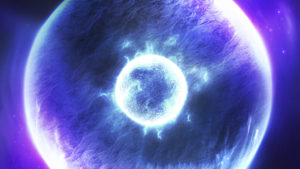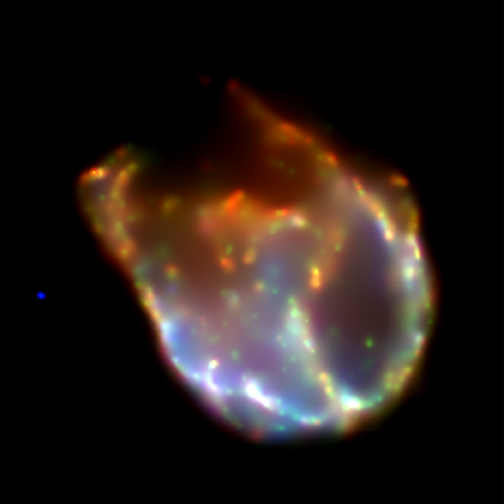


|
Oct 11, 2005 Both conventional and electric supernovae are exploding stars. But what constitutes a star and what constitutes an explosion are quite different in each case. In the conventional view, a supernova is an exploding star. Because gravity is the only force available to explain the organization of matter into stars, stars are isolated and autonomous objects that must get the energy they radiate from internal sources. The explosive release of abnormal amounts of energy in a supernova must come from the same (or similar) internal sources. When telescopes observe high-energy radiation and fast-moving particles, the cause can only be heating and acceleration by shock waves. The intensities required must demolish the star. These are constraints imposed by theory, not empirical limits from observing actual supernovae. In the Electric Universe view, a supernova is also an exploding star. But an electric star is a power-consuming “pinch”—a load—in a galactic circuit of Birkeland currents. The circuit drives the pinch, just as circuits in a house drive the electric lights. Because the power comes from the circuit, the interior of an electric star could be composed in any number of ways. It could be a “balloon” of thin (or dense) plasma with constant density throughout. (The oscillations of the Sun’s surface are consistent with this model.) It could contain a solid body acting as an electrode for the “anode tufting” that makes up the visible surface, or photosphere. Because the power comes from the circuit, the radiation and “wind” of an electric star are the effects of the arc discharges that make up the corona, chromosphere and photosphere. Fluctuations in these discharges generate “double layers” (DLs), which can become unstable and explode into flaresand coronal mass ejections (CMEs). One characteristic of an exploding DL is that the energy of the entire circuit, not just the energy contained locally in the DL, can flow into the explosion. The energy increase accelerates the expansion of the DL and the particles composing it. This acceleration persists out to many stellar diameters from the visible surface of the star. At the same time, the radiation from the DL climbs into the ultraviolet or x-ray—or even gamma-ray—range, giving off a burst of high-energy “light” that has a time distribution like that of lightning: a sudden onset and exponential decline. In the Electric Universe view, a supernova is simply a star that is engulfed by an exploding DL. Because the circuit drives the DL, the energy released by the supernova doesn’t have to come from internal or even local sources. Shock waves and heat are by-products of a phenomenon that is primarily electrical. The above image of a supernova, in x-ray “light”, shows the filamentary edge of the DL as it expands into interstellar space. The horseshoe shape (as well as the more common bi-polar shapes seen in other supernovae) is a result of the larger electromagnetic forces driving the DL’s expansion. (In contrast, conventional theory expects a spherical shock-wave shell. Observed asymmetries can only be accounted for by making ad hoc adjustments to the fundamental theory.) The DL encompassing the supernova is itself composed of secondary current filaments and DLs, among which the total energy is unequally distributed: higher-energy x-rays (in blue) are emitted by the lower segment; lower-energy x-rays (in red) come from the upper segment. |
||
|
Copyright 2005: thunderbolts.info |
||